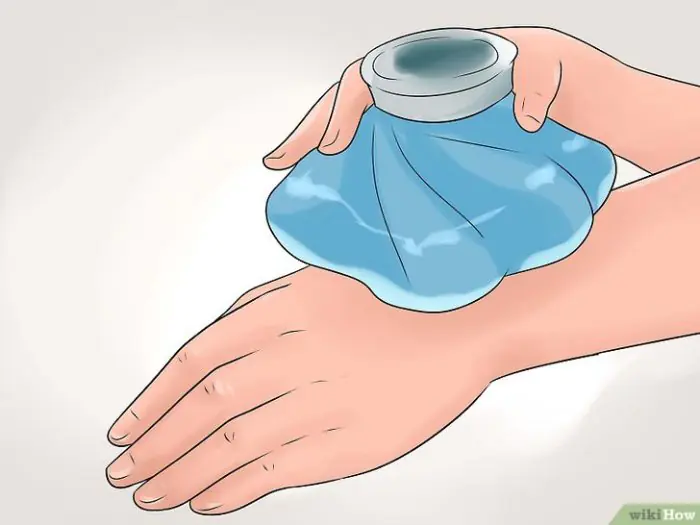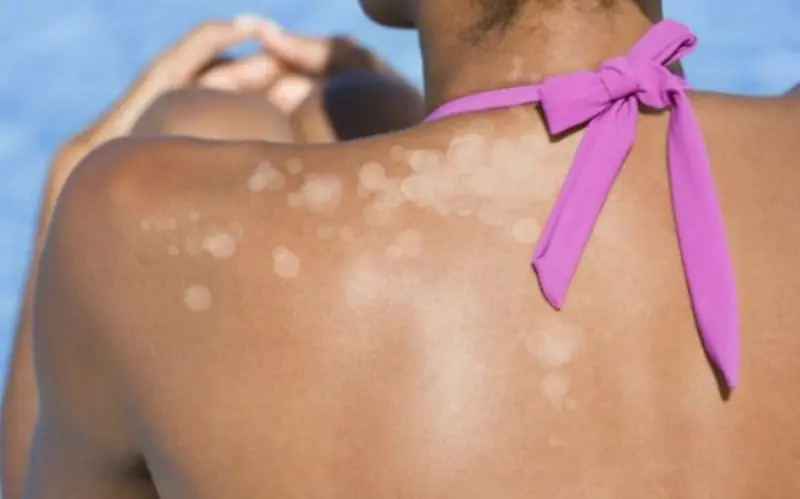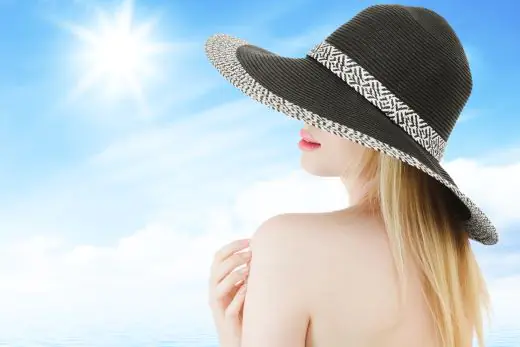Beautiful tanned skin is the dream of many modern people. However, not everyone knows how to tan properly. Failure to follow the basic rules of safe tanning causes burns, pigmentation, moles and red spots to appear on the skin. Next, we’ll take a closer look at how to properly treat red spots after sunbathing.
Types of reactions to the sun
The reaction to the sun's rays can be in the form of rashes of various shapes and colors.
Solar urticaria comes in the following types:
- Red rash after sunbathing. In most cases, this is how an allergy to ultraviolet radiation manifests itself. Rashes can appear either immediately or several hours after sunbathing. If you are allergic to the sun, be sure to use sunscreens with a high degree of protection, as well as sunbathe under an umbrella.
- White rashes after sunbathing. Such spots can appear from both natural and artificial ultraviolet radiation. Mostly white rashes occur during prolonged exposure to intense sunlight. May appear on various parts of the body. The most important thing is to sunbathe only before 10 a.m. or after 4 p.m. to avoid unpleasant skin reactions.
- Watery rashes. This is the first sign of sunburn. First there is redness and swelling. Then blisters appear on the skin, which gradually fill with liquid. Eventually, the blisters begin to burst and peel off, leaving open wounds. In addition, body temperature may rise and general health may deteriorate. The most important thing is not to pierce the blisters yourself, so as not to cause an infection and lead to an inflammatory process. In order to avoid the appearance of blisters, you need to apply an anti-sunburn remedy, for example, Panthenol, to the reddened skin. The product will quickly relieve all symptoms of sunburn and stop the inflammatory process.
Signs of the disease
Main symptoms of sunburn:
- Swelling and redness of the skin.
- Red dots on the skin after sunbathing
- Pigment spots of a red or brown hue.
- Blisters filled with fluid.
- Increased body temperature.
- Headache and fainting.
Causes of the rash
Red spots may appear on the stomach, arms and face for the following reasons:
- Prolonged exposure to direct sunlight.
- Taking medications that affect hormonal levels and increase skin sensitivity to ultraviolet radiation.
- White skin prone to allergies and irritations.
- Not using sunscreen.
- Sunbathing during the lunch period, when there is an increased intensity of ultraviolet radiation.
Symptoms of solar urticaria
Sunburn is manifested by the following symptoms:
- First, red spots and swelling of the skin appear.
- Sunburns are accompanied by severe pain.
- Bubbles appear and gradually fill with liquid.
- Increased body temperature and deterioration in general well-being.
Treatment of skin rashes on the body

Treatment for sun allergies includes the following:
- First of all, you need to move the victim to a room with normal temperature and humidity.
- If redness and swelling occur, apply cold compresses. You can use plain water or medicinal herbs.
- Necessary treatment involves the use of medications that relieve redness and swelling after ultraviolet exposure.
- In order to relieve the symptoms of sunburn, ointments and creams are prescribed. Panthenol, Fenistil or Radevit are mainly used. They quickly eliminate swelling and red spots after ultraviolet exposure.
- In order to eliminate allergic reactions on the skin, antihistamines are prescribed, for example, Cetrin or Suprastin. They help eliminate red spots and pain after sun exposure.
- To restore the skin after ultraviolet radiation, vitamins are prescribed, for example, groups B and E. They maintain the youth and beauty of the skin and accelerate the process of regeneration of affected tissues.
- It is necessary to increase the drinking regime and cleanse the body of toxins. Sorbents are prescribed that remove toxic substances from the body.
Treatment with folk remedies
There are many folk recipes that help relieve the first symptoms of sunburn and restore skin after ultraviolet exposure.
You can try these traditional methods:
- Cold compresses with chamomile infusion perfectly soothe the skin after ultraviolet exposure. Prepare the decoction according to the manufacturer's instructions.
- Allergy to the sun manifests itself in the form of redness and swelling of the skin. You can get rid of it using raw potatoes or cucumbers. We chop the vegetables and make compresses. You can repeat the procedure several times a day until all symptoms of sunburn are completely removed.
- Cabbage juice also quickly soothes the skin after ultraviolet radiation.
- Aloe juice perfectly restores the skin and stops the inflammatory process. You can use fresh juice or prepared tincture to wipe the affected skin.

Prevention
To avoid an allergic rash after sunbathing, you should follow simple rules:

Content:
Causes of sun allergies
Sun allergy is recognized as the most common type of actinic dermatitis in adults. In this case, the skin becomes inflamed when exposed to direct sunlight. In an advanced form or in the absence of proper treatment, such an allergy can develop into a chronic disease or even eczema. That is why, at the very first symptoms, you should immediately take action.
A person exposed to direct sunlight may experience an allergic reaction when, in addition to prolonged exposure to the sun, one of two factors is added: external or internal, and this is the cause of the disease.
Internal factors represent various diseases:
- liver,
- kidney,
- intestines,
- immune or endocrine systems,
- chronic or previous infectious diseases,
- hypovitaminosis.
External factors contribute to the appearance of photosensitizers in the body and are represented by the following groups:
- cosmetics;
- medicines;
- food additives;
- plant pollen;
- chemicals in water (chlorinated pool).
When purchasing hygiene products, decorative cosmetics, sprays or perfumes, you need to familiarize yourself with the composition of such products. This is done due to the fact that certain components (for example, bergamot, sandalwood, musk) under the influence of UV rays can cause changes in the skin, burning or itching. Even the same sunscreen can lead to sun allergies.
In combination with intense solar radiation, pollen from meadow plants (buckwheat, nettle, quinoa, etc.) that gets on human skin can also become harmful to the body.
Swimming in ponds, the sea and swimming pools is undesirable if you have a sun allergy, since the drops act like lenses, enhancing the body’s negative reaction to ultraviolet radiation.
Already taking this into account, we can draw conclusions about the following factors that increase skin sensitivity to ultraviolet radiation:
- The use of external medications,
- Cleaning and other household products that affect human skin
- Some cosmetics
- The influence of the juices of some of the plants (for example, hogweed),
- Metabolic disorders
- Diabetes,
- Having excess weight
- Cirrhosis of the liver,
- Hepatitis (chronic form),
- Problems with kidney function,
- Systemic therapy with drugs,
- Hereditary predisposition.

Allergy susceptibility
A healthy person who does not have any disorders and has a strong body is unlikely to be susceptible to an inadequate reaction of the body to the sun. Increased sensitivity to the sun's rays may occur in the following categories of people:
- babies;
- pregnant women;
- those suffering from chronic diseases;
- old people;
- having problems with the kidneys and liver.
At risk are those people who exhibit diseases of the endocrine system and metabolic disorders. Allergies appear in children weakened by an infectious or other disease that requires long-term treatment. The body’s reaction is a consequence of shaky immunity, when protective functions decrease.
How does sun allergy manifest in adults - symptoms
Allergy to the sun in adults manifests itself primarily as redness on the skin. The spots can be pinpoint (rash) or merged together.
Treatment of the disease is urgent, since the nature of the rash can become more severe. For example, hives develop into eczema (wet rash). Eczema can affect not only areas of the skin exposed to sunlight, but also closed areas of the body.
Symptoms of the disease may vary depending on:
- root causes;
- amount of photosensitizers;
- sun exposure intensity;
- age of the allergy sufferer.
In some adults, symptoms appear instantly - just being in the sun for a few seconds is enough. For others, they may make themselves felt after a few hours, and for others, after a couple of days.
It also happens that allergies manifest themselves after a solarium - they also use ultraviolet rays, albeit safe for a healthy human body.
The following list includes the most common signs of an allergic reaction to the sun:
- Swelling in areas of the skin exposed to the sun (Quincke's edema can also be severe),
- Redness of exposed and sun-damaged skin,
- Burning of these areas, severe itching,
- A rash that resembles hives (and sometimes occurs in places that have not been exposed to sunlight),
- Change in health for the worse
- Conjunctivitis or cheilitis.
Sun fungus
Polymorphic photodermatosis - spots on the skin after the sun
About 20% of the entire adult population suffers from various forms of a disease such as sun allergy. In medicine, such a reaction of the body is called photodermatosis (photodermatitis). Based on the definition, it can be understood that the body’s negative reaction to solar radiation manifests itself on the skin.
This type of dermatitis affects the areas of the body that are most sensitive to sunlight - the décolleté and face. Reactions are also observed in the arms, legs, shoulders and abdomen.
An allergy to the sun can occur in 2 cases:
- With prolonged exposure to the sun.
- In the case when, together with a sufficient dose of ultraviolet radiation, an irritating factor also has an effect.
Anyone who goes to the beach, an open forest clearing, the shore of a lake or to a pool to sunbathe is at risk of getting skin burns due to prolonged exposure to the scorching sun. No one is immune from such a phototraumatic reaction.
A phototoxic reaction of the body to sunlight occurs when a person takes certain foods, herbs, and medications that contain a high content of photosensitizers - substances that increase the sensitivity of tissues to sunlight.
The body of allergy sufferers perceives ultraviolet radiation as something toxic and harmful, which is why its rejection reaction occurs. Sun allergy is a pathological process and requires preventive and therapeutic actions.
Polymorphous photodermatosis is a common form of primary photosensitivity that mainly occurs in young adult women in temperate climates during the spring and summer and is manifested by the appearance of skin patches on certain areas of the body:
- The spots can come in a variety of shapes, although in one person they usually look the same each time they appear.
- Typically affects adult women aged 20-40 years.
- Polymorphic photodermatosis is caused by a delayed hypersensitivity reaction to a compound in the skin that is altered by ultraviolet radiation (UVR). UVR leads to impaired T cell function and altered cytokine production in affected individuals. There is a decrease in normal UV-induced immune suppression in the skin. It is thought to be related to estrogen, vitamin D deficiency, or the microbiome and antimicrobial factors.
- The reaction may be rare in a particular person, but can occur any time the skin is exposed to sunlight. For many affected people, it occurs every spring and is caused by spending a few hours outside on a sunny day. If additional exposure to the sun is avoided, the rash goes away within a few days and disappears without a trace within a few weeks.

The most common form of the disease is a 2-5 mm pink or red spot.
But there are other types:
- Erythema (red macules)
- Erythematous plaques
- Dry, red patches or plaques (dermatitis)
- Vesicles (bubbles)
- Pinpoint papules
- Lifenoid plaques
- Focal lesions
- Spots are usually limited to exposed areas
- There is often itching without visible signs.
- The allergy lasts for several days and often longer if the affected skin is exposed to sunlight,
- It goes away without scars.

Types of sun allergies
Allergic reactions to the sun have their own varieties, differing from each other in some properties. Due to the influence of negative sunlight, a person may experience reactions that are abnormal for a healthy body - photosensitivity:
- Phototraumatic reactions
Pathological processes that form after a long time in the sun. It can also occur in a healthy person who has not previously experienced this disease, but has spent a lot of time exposed to ultraviolet radiation. - Phototoxic reactions
In this case, sunburn occurs on the body. The main signs of such reactions are swelling, redness, blistering and erythema. This manifestation of sun allergy is facilitated by external medications, various products and herbal juices, which contain photosensitizers. - Photoallergic reactions
It also happens that the human body itself does not accept ultraviolet rays. For the skin of such a person, the sun's rays are a negative, hostile influence. This happens with immune disorders. The main symptoms appear in the form of oozing, papules and vesicles. Lichenification of the skin is also possible. The skin thickens, pigmentation is disrupted, and the rash itself intensifies. To the touch, such skin is rough and furrowed.
How to treat
If we talk about treatment, it can take place in two main directions:
- Preventive measures (preventing repeated skin manifestations of allergies).
- Elimination of rashes, redness, burns.
Treatment requires, first of all, prevention. These are any protective measures by which a possible negative reaction of the body to the sun can be avoided. To do this, every time you plan to be on the beach or near a river, you should treat exposed areas of the body with a protective cream. This is done 20 minutes before going out and every time after swimming, if the previously applied cream is washed off.
If you still cannot avoid a rash, blisters, itching and redness, you need to find out what caused the allergic reaction. To do this, you should contact qualified specialists who can prescribe antihistamines. Allergies should be treated only by professionals; getting rid of the symptoms of photodermatitis using folk remedies is unacceptable!
The therapeutic effect is exerted by:
- Creams for dermatitis and sunburn,
- Allergy pills,
- Ointments containing zinc.
If we talk about folk remedies for treating burns and rashes, then you can soften rough and itchy skin:
- by applying a cabbage leaf,
- processing raw potato or cucumber juice,
- Compresses based on celandine or calendula will also help relieve inflammation.
The following medications may reduce the severity and duration of an allergic reaction:
- Hydroxychloroquine is the most common treatment prescribed for severely affected people.
- Corticosteroid ointments
- Oral antihistamines
- Oral corticosteroids, such as Prednisone or Prednisolone.
- Immunodeficiency drugs such as azathioprine are sometimes used.

Many people love to sunbathe, and therefore every summer they try to get out to the sea and lie on the hot sand. True, an excessive love of sunbathing and ignorance of basic safety rules leads to such a problem as spots on the skin after sunbathing. At this time, your skin is in great danger and can “react” to such abuse in the most unexpected way.
Spots on the skin after sunbathing - what could it be?
Such spots can be, for the most part, either pigmented, or allergic, or burns.
Reason #1 - burn
Such spots appear after a person gets sunburned. They are usually red, scalding, and itchy. After about 1 day, the skin begins to become covered with blisters, which rupture and new red spots form in their place. 4-5 days pass, and gradually the skin darkens slightly, acquiring a tan shade, and the spots are compared in color with the overall skin tone.
This phenomenon is quite dangerous, since the burn causes irreversible changes in the skin. It is good if the skin is able to regenerate, but if this does not happen, melanoma may develop - a malignant tumor that kills thousands of people around the world every year.
By the way, melanoma also occurs in tanning enthusiasts who note the appearance of not red, but white spots. They are formed when there is a low level of melanin, which ideally protects the skin from exposure to ultraviolet radiation.

Reason No. 2 - sun allergy
Recently, the number of cases of allergies to sunlight has been steadily increasing. At the same time, patients note that even if they are in the sun wearing closed clothes, the rays penetrate through them so much that spots appear on the skin after tanning. They are usually localized in the collarbone area, on the head and limbs.
The spots protrude slightly from the surface of the skin and may be slightly oblong in shape. As a rule, itching occurs at the same time. There can be only one salvation here: take antihistamines and try to be in the sun as little as possible.
Reason No. 3 - dermatological diseases
If you've been to a crowded beach, chances are you've contracted some kind of fungus. Typically, fungal diseases, lichen, dermatitis and many other similar ailments manifest themselves in the form of redness. This problem must be treated under the supervision of a doctor.
Be careful and monitor the condition of your skin!
How to prevent sun spots

If you already have stains or want to avoid stains, our advice is to put together a chic, stylish collection of tightly woven straw hats and keep them on a rack near your door.
No baseball caps! They have no brim and do not cover the ears. Sometimes anti-aging solutions can be delightfully simple. Sunglasses with wide arms and large lenses will also help.
Keep an eye on your moles
Most moles are benign, but it is worth checking them all over your body every month. If you notice a change in the number or color (especially if the mole is two-colored), size, height or shape, if the mole bleeds, itches, peels, or becomes tender and/or painful, consult your doctor.
Cover up sun spots on your skin with makeup. So, you have an age spot. What to do? To quickly solve the problem, use makeup. Apply a matte yellow or peach corrector or concealer on top of the primer with a brush, and then press with your finger without smearing. If necessary, apply foundation on top.
Be careful with perfume
Some perfume ingredients—especially citrus derivatives (such as bergamot)—can interact with sunlight and cause staining. Our advice: in summer, the safest way is to apply perfume in the evening rather than during the day, or to apply it where there is no direct sunlight.
Cosmetics that remove spots on the skin after sunbathing

Ironically, according to Dr. Daniel Jarosz (Senior Vice President of Estee Lauder's Basic Research and Development Department), “Sun spots these days appear many decades before the first moment of old age.
This is a dangerous sign that sun worship has gotten out of control.”
It should be frankly said that such spots on the skin after sunbathing are a serious problem. But there is good news: pigmentation can be fought.
Never go outside without SPF 30 or more protection.
And please start immediately! This is not even discussed. Such products will help not to aggravate the condition of existing stains and will even make them a little lighter.
Are you still suffering from age-related pigmentation? Daily use of a cream with SPF15 (or higher) is an excellent prevention; you will never develop spots on your skin after sunbathing. If you spend a lot of time outside, apply it to your hands as well. And update the layer every time you wash them.
Try a special product
Large amounts of research are now being spent on research in this area of skin care. In some countries, dermatologists may still prescribe hydroquinone, but in others the skin-lightening substance has been banned. Laboratory studies on animals have shown that it leads to DNA mutations, although we do not endorse this testing method at all.
And even in the US, where the use of hydroquinone is very popular, treatment with a 4% solution is allowed for a maximum of 12 weeks. We suggest that you use one of the commercially available products instead.

Apply the product very carefully. Most of these remedies take time to work, and no miracles will happen overnight. (You'll likely need a minimum of three months).
Remember that some products require spot application with a cotton swab, while others are applied all over the face. And one more tip: apply the product in small doses to the darkest spots at least an hour before you go to bed.
Erase stains with laser
There is a high-tech solution. You can remove stains using a laser. It is expensive. But you will get rid of your shortcomings.
Spots on the skin after sunbathing: a cosmetologist explains the reasons



